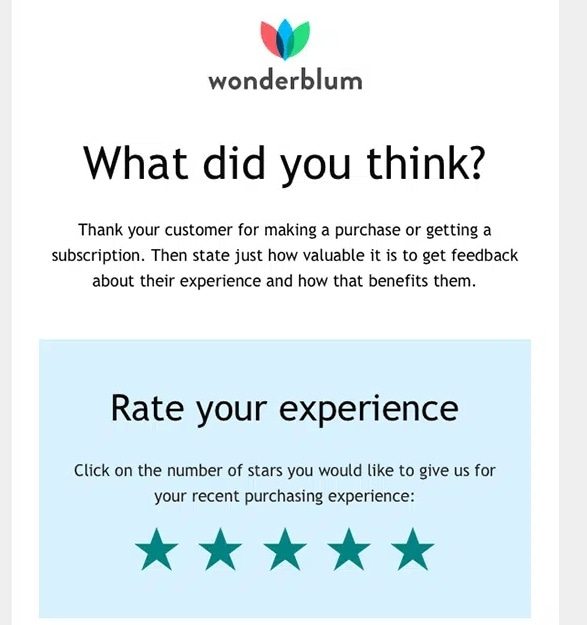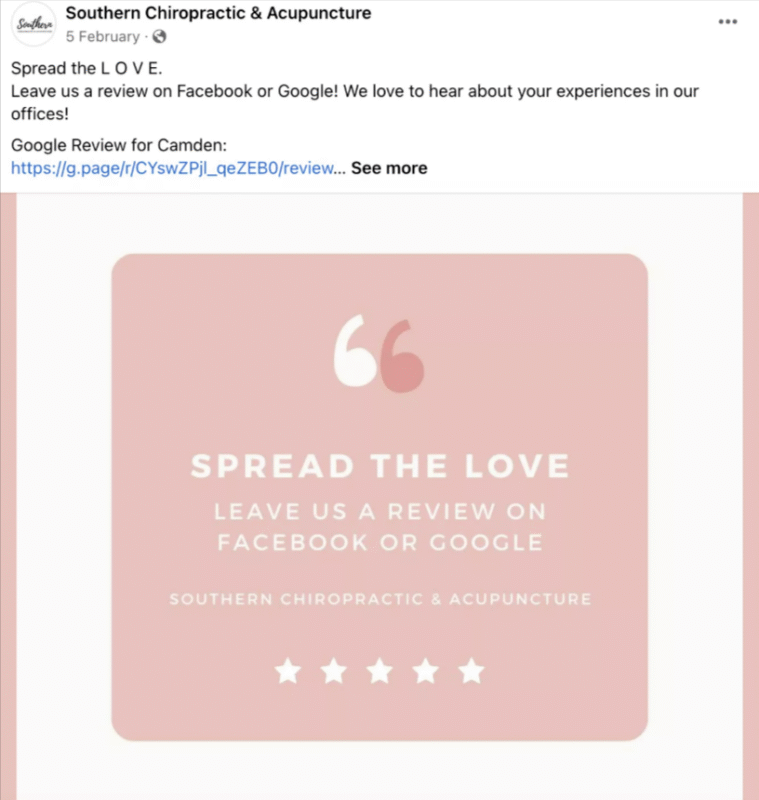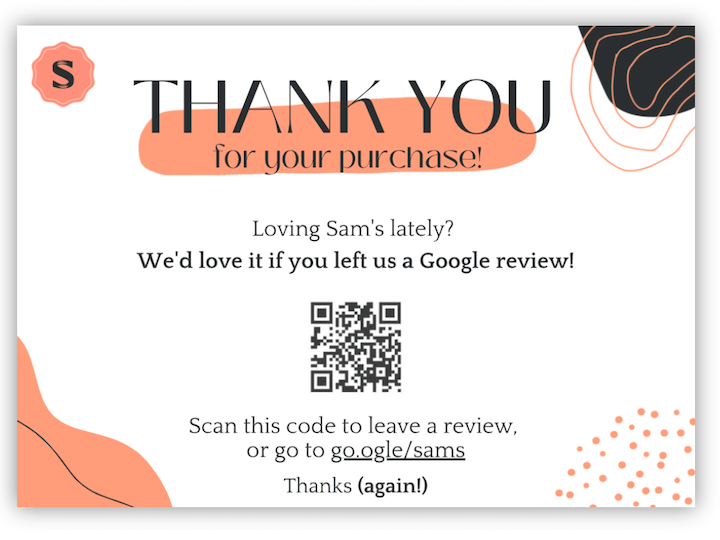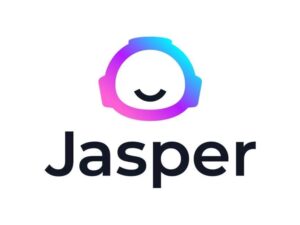Why Are Reviews Crucial For Your Business?
How many times have you done your online research and bought from a company that had many positive reviews while ignoring those with zero or mediocre ratings? This is how human brains are wired to act in today's competitive landscape. Sure, sometimes we buy things without checking reviews because someone suggested them to us. The truth is, though, that potential customers want to hear what others have to say about you. Learning how to ask for reviews increases your chances of receiving customer feedback that ends up bringing in more traffic and conversions. This never-ending process should be part of your online reputation management strategy. Even when you receive a negative review, it's crucial you act fast and do damage control.
At eLearning Industry, one of the things we do to help eLearning and HR tools get better rankings is host the People's Choice LMS list based on people's experience using LMS tools. But it's not all about LMS software. Our website helps a variety of tools receive positive assessments and improve their chances of getting picked up by targeted buyers.
In This Guide, You Will Find...
- Why Should You Ask Clients For Reviews?
- Ways You Can Ask Customers For Reviews
- When Should You Ask For Reviews
- 4 Tips To Consider When Asking For Reviews
- 4 Proven Templates That Win Your Ratings
- eLearning Industry's Niche Directories Are Great For Leaving Reviews
- Final Tips On How To Ask For Customer Reviews
Why Should You Ask Clients For Their Feedback?
-
Brand Reputation
When you make a request for review, satisfied customers often accommodate it. This is how you end up with customer testimonials, ratings, and short evaluations. As a result, potential buyers can see that you are a legitimate business that customers love to work with and see tangible results. They don't have to take your word for it; they can actually see it.
-
High Ratings
Before we advise you on how to ask for reviews, let's just see what official stats show. 70% of Google reviews come from companies directly asking customers. Not only that, but requested reviews produce higher ratings (4.34 stars) compared to unprompted feedback (3.89 stars).
-
Search Performance
Any seasoned Search Engine Optimization specialist will tell you that search engines prioritize businesses offering a good customer experience. Whether these reviews are on your Google profile or various niche-relevant sites, they lead to better rankings. They factor into both your organic and local search performance.
-
Customer Outreach
It's not only about finding clever ways to ask for reviews but about generating actual feedback. Also, the way you respond to your customers' feedback shows potential buyers you value their opinion. This way, people are more likely to engage with you and choose your product.
-
Brand Advocates
Imagine if you started getting new customers because someone they know suggested your product. This is the point of ratings: to turn satisfied customers into brand advocates. This is why you should know how to ask for reviews and use them as a promotion tactic.
Ways You Can Ask Customers For Reviews
While some clients may be 100% happy with you, they just don't think of going online and leaving their feedback. That's why it's in your hands to ask for a review. Let's explore the most effective ways you can do that.
-
In Person
The most common scenario is at a conference or in-person event when a client approaches you to offer genuine praise about your product or customer service experience. Grab this opportunity to thank them and ask them if they would be willing to put all those nice things into writing an online evaluation. But don't wait until such instances arise. You can approach your buyers during events and ask them about their experiences with your product. Listen to their feedback and ask whether there is anything you can improve. If they appear overly satisfied, you can tell them something like, "We would love it if you could please leave us a review."
-
Via SMS
People are on their phones all the time, and the majority of online feedback is provided through mobile devices. So, if you want to find the most efficient way to ask for reviews, SMS messaging is your answer. Data shows that SMS open rates are 98%, while 95% of messages are answered within 3 minutes. You can find various Google review request templates online and personalize them to appeal to each customer's unique case.
-
Through Your Website's Review Page
It's common for companies to build dedicated landing pages customers can visit and leave a review. Your development team can build such a landing page. Alternatively, you may facilitate these pages through reputation management software, survey forms, and widgets. You want the overall experience to be easy and simple. You don't want people to spend more than 5 minutes filling out surveys and answering mandatory questions.
eLearning Industry offers the same opportunity and even more. In fact, you can participate in our eLI's Top List Awards and create even more buzz around your business.
-
Via Email
The wide array of email marketing benefits is known to business owners. So, one of the ways you can leverage your email marketing automation tool is by arranging email review sequences. Keep in mind that 70% of customer feedback comes after a purchase. So, once someone buys your product, wait for a while, and then send them an email. Keep your messages short and explain the steps people can take. You can direct them to any site you want, whether it's your dedicated landing page or another review site like Google. Tell them exactly what they should do and how much time it might take.
-
Via Social Media
Another way to ask for reviews is through social media. In this case, though, not all platforms are created equal. Facebook is known as a top place for customers to submit their feedback about their company experiences. There are two ways you can generate testimonials on Facebook. For starters, you can simply ask people for their experience through posts. Alternatively, you can post other triumphant customer stories and express your gratitude to clients who share their thoughts. Make sure to include a link so others can talk about their experiences.
-
On Business Review Sites
Many businesses understand the necessity of including their tools in top directory submission sites. eLearning Industry's PPC directories are a top choice for eLearning and HR software to generate interest from targeted buyers and testimonials from satisfied clients. Anyone can submit their business for free. However, for reviews to be visible, you have to invest in a PPC listing upgrade. And it's an upgrade worth spending money on since you appear at the top of the page and increase visibility compared to your competitors.
There are other software review sites where you can encourage users to leave their reviews. TrustRadius, GetApp, Trustpilot, and SoftwareReviews are all great choices for B2B companies aiming to increase their online reputation. You just pick your software category and start asking your buyers to submit their feedback there.
When Should You Ask For Reviews?
1. After A Great Experience
There is no better time to ask for a review than right after a positive experience. For example, a client purchases a subscription to your software. After the onboarding period is over, you can see that they are overly satisfied. They tell you how much easier business practices have become, and you have delivered your top B2B customer service examples. Now is the time to send them an email or tell them during a meeting that you would appreciate them putting their kind words into an online testimonial. Remember that long-term customers with high satisfaction levels can help you craft case studies that are valuable marketing tools.
2. After A Customer Service Experience
Many companies tend to send automated messages after a client reaches out to their customer service team. Was their problem solved? Were they satisfied with the experience as a whole? This is one of the greatest opportunities to ask for reviews, especially when you know that a customer query was addressed successfully. But don't avoid sending requests to those who didn't seem to have a great experience. Receiving negative feedback is part of the process. You must listen to it in order to improve your services and show high-quality business leads that you don't shy away from addressing issues and doing your best to solve them.
3. During Engagement Moments
Some companies are more active than others on social media. They like and share your posts, leave comments, and tag you on their posts. These companies are obviously very happy with your collaboration and active brand advocates. One of the best PPC directory tips we can give you is to make a list of these customers. Choose the best way to contact them, whether it's via SMS message, email, or in-person meeting. Ask them directly to leave positive review comments for your product. You may offer to do the same for them as a gesture of partnership. For example, if they made a post talking about working with you, you may start the conversation like this: "Hey [name], would you mind sharing that in an online review?"
4. After Loyalty Milestones
Your customer acquisition strategy shouldn't focus on bringing in one-time buyers but loyal customers who upgrade their plans and renew their subscriptions. When someone keeps purchasing stuff from you, it's a clear sign that they love your products. It's the same with loyalty cards at restaurants and retail stores. The more loyal a buyer is, the higher the chance of leaving a triumphant evaluation of your business. You can pair your review request with other benefits, including discounts or free trials, while making it clear you are not offering this incentive because they are submitting a testimonial, but because they are great customers. We will explain later why incentivizing reviews isn't a great practice.
When, precisely, should you send your request? Research shows that the best timing is on weekdays between 2 and 3 pm and 6 and 7 pm. Also, don't send a request too soon. Wait until they've had the opportunity to use your product and see whether it works for them or not.
4 Tips To Consider When Asking For Feedback
1. Personalize Your Request
We mentioned earlier how personalization is crucial to satisfy your review request. Why, though? For the same reason you personalize your emails: you show people that you pay attention to them and that they are important to your brand. So, start by mentioning their name and saying how you noticed their interactions with you. For example, you may say, "Hey John, we noticed that you've been engaging a lot with us on social media after your purchase. Can you please leave us a review?" Don't forget to explain why their feedback is pivotal in improving your services and ensuring customer experience is at the best level possible.
2. Don't Incentivize Reviews
One way to not ask for reviews is by incentivizing people with free gifts, discounts, and special offers. Why? Many sites, including Google, have strict policies against incentives. It's pretty obvious to understand why. Offering something in exchange for feedback makes it look like you are paying for them instead of generating them naturally. As a result, you end up having many low-quality or star-only ratings that don't offer any value to users' research. What you can do to invite reviewers and therefore generate new leads is promise a donation for every evaluation you receive. For example, you may say, "For every review we receive, we will donate X amount of money to X organization."
3. Always Respond
Don't you feel respected and appreciated when a company responds to your review? That's the case with B2B clients, too. You have to keep track of all the sites people can go to and submit their experience with your brand. Whether positive or negative, respond promptly. A simple "thank you" might do for positive assessments. For negative ratings, address the situation with grace. Apologize for the inconvenience and acknowledge the fact that you made a mistake. Make a promise that you will work toward improving your services. This way, you show that you value people's viewpoints, and you build meaningful relationships. Besides, Google values engagement and activity on your listing. In fact, it is one of the ranking factors it takes into consideration.
4. Ensure Compliance With Guidelines
If you want to know how to get customer reviews, you should also know each site's guidelines. For example, Yelp doesn't like it when businesses ask clients for ratings—it may actually suppress customer feedback that was given upon request. But you probably don't really care about Yelp. You care a lot more about Google, right? The platform not only likes requested reviews but also offers tools so you can automate the process. What you should avoid at all costs is buying reviews. It's pretty much like buying backlinks for your website. Google has strict guidelines against these practices and will give you a fine if it identifies customer ratings as purchased.
4 Proven Templates That Win Your Ratings
Example 1: Email Request Template
Your feedback request email doesn't have to be long and complicated. A simple message with some visuals and potentially a QR code is more than enough to encourage people to take action. While you could personalize these emails according to each customer's experience, we think a generic email may be good enough in this case. Just make sure you write a catchy email subject line to increase your open rates.

Example 2: SMS Request Template
With SMS review requests, you can get personal, as people already consider messages to be more intimate than emails. So, grab this opportunity to talk to your clients like they are your friends. Mention specifically why you want a rating from them. For example, if they purchased your authoring tool, mention that in your message.

Example 3: Social Media Request Template
Your social media strategy should focus heavily on gathering social proof regarding your brand and individual products. Other people are influenced by reviews on platforms like Facebook as they perceive them as genuine. Usually, these testimonials are raw and use simple language.

Example 4: Google Request Template
Google reviews are powerful, and B2B clients know that. They are probably asking their customers to submit such evaluations, so they understand the value. After a purchase, wait for a while, and send them a simple email request. You can include a QR code to simplify the task if they prefer to submit their impressions using their phones.

eLearning Industry's Niche Directories Are Great For Leaving Reviews
As an experienced SaaS PPC agency, eLearning Industry knows how important reviews are to make your directory listing explode in popularity. That's why we've made it easy for corporate buyers to leave reviews on relevant software pages. This way, you increase your chances of getting picked up by clients. Upgraded listings not only appear at the top of every directory page but also feature ratings and a CTA button that directs users to your website or preferred landing page. Imagine this. Every directory features 30–1000 listings. How will you stand out from the harsh competition if you are buried somewhere on the fifth page?
Pick your category, and start leaving reviews for products you've used before:
Final Tips On How To Ask For Customer Reviews
- Don't force people to offer their feedback.
- Keep your emails short. The faster people can read them, the better.
- Don't ask just anyone to leave a review. Your friends and family may be willing to do it, but it's not advisable.
- Don't ignore or become defensive at negative feedback.
- Remember that customers want to talk about their experiences.
- Always follow up, no matter the review.
Key Takeaway
To create effective PPC strategies, you must realize the tremendous value of online reviews, ratings, and testimonials. Yet, waiting for your customers to submit their feedback isn't the best strategy. You need to remind them of the importance of this process. Whether you choose email, SMS, social media, or in-person communication, make your message pop. You don't want to get lost in the queue. Additionally, don't be apologetic when you make your request. Present a narrative that makes it look like clients are the superheroes you need to improve the quality of your services.
Try to be personal in your requests and avoid incentivizing them. It's best to ask them after a positive interaction with your brand, a positive product experience, or a loyalty milestone. Make sure that you are not being extra pushy by sending them messages every single day. If they don't submit a review, it means that they don't want to.
The ideal moment is right after a positive interaction or successful outcome, such as completing onboarding, solving a problem, or a milestone event. Timing your request while enthusiasm is still high significantly increases the chances of a positive review.
Gauge the customer’s sentiment first by looking for signs of satisfaction, and then ask with phrasing that feels natural (“If you’ve had a positive experience, could you share a couple lines?”). Keep it friendly, optional, and easy, and avoid multiple nudges or urgent calls to action.
It depends on your customer segment and channel norms:
-
Email: Personalize it and include direct links.
-
SMS: Works well if customers are already opted in.
-
In person: Effective when followed with QR codes.
-
Phone: Best for high‑touch relationships
mall, ethical incentives (like a thank-you discount) can motivate but must comply with platform rules. Prioritize genuine feedback and transparent framing (“As a token of thanks…”) to avoid appearing transactional or violating guidelines.
-
Asking too early or too often, which comes off as desperate.
-
Using generic, impersonal copy.
-
Creating friction—requests without direct links or instructions.
-
Over-incentivizing or encouraging only positive reviews


